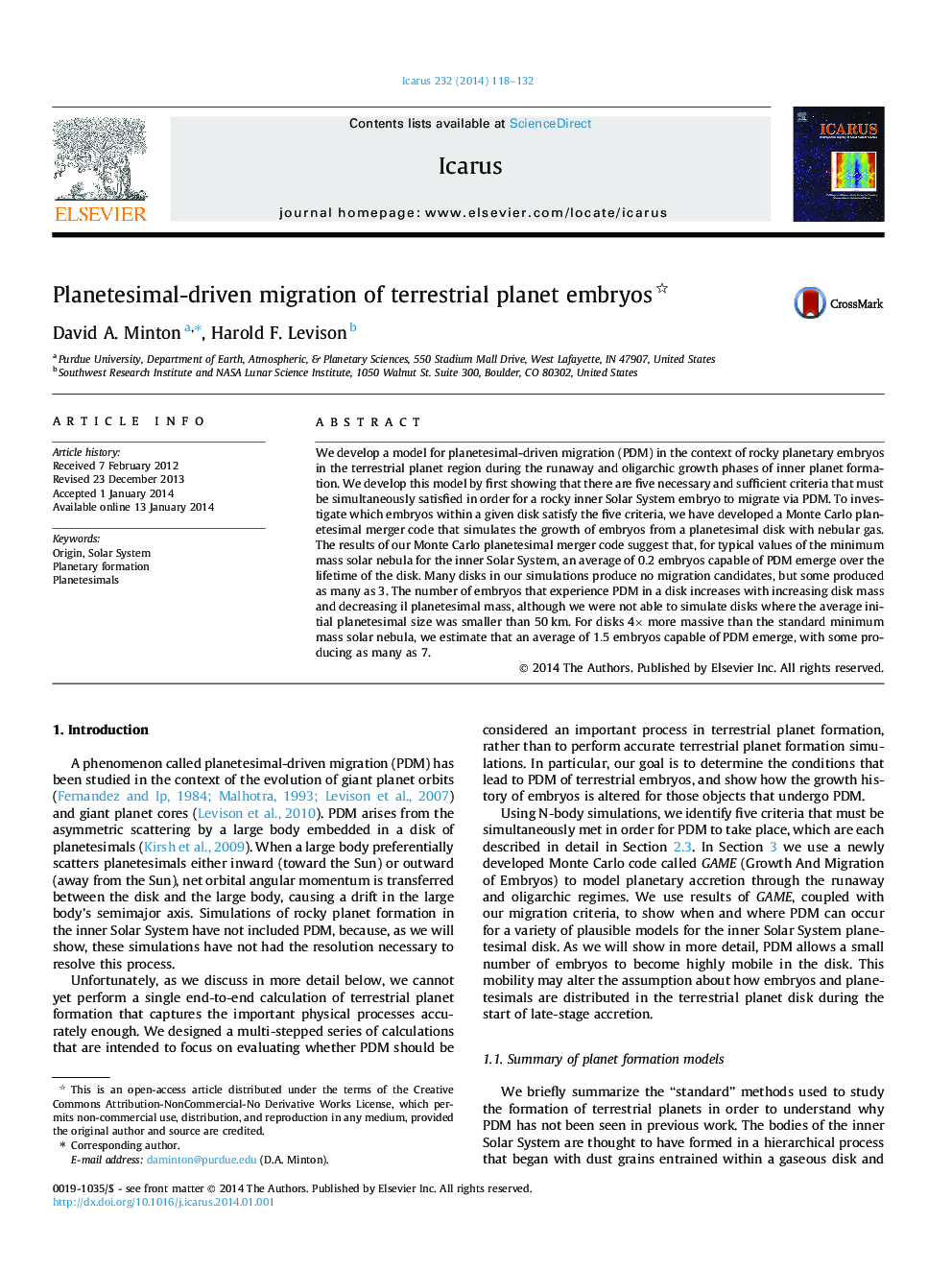| Article ID | Journal | Published Year | Pages | File Type |
|---|---|---|---|---|
| 8138487 | Icarus | 2014 | 15 Pages |
Abstract
We develop a model for planetesimal-driven migration (PDM) in the context of rocky planetary embryos in the terrestrial planet region during the runaway and oligarchic growth phases of inner planet formation. We develop this model by first showing that there are five necessary and sufficient criteria that must be simultaneously satisfied in order for a rocky inner Solar System embryo to migrate via PDM. To investigate which embryos within a given disk satisfy the five criteria, we have developed a Monte Carlo planetesimal merger code that simulates the growth of embryos from a planetesimal disk with nebular gas. The results of our Monte Carlo planetesimal merger code suggest that, for typical values of the minimum mass solar nebula for the inner Solar System, an average of 0.2 embryos capable of PDM emerge over the lifetime of the disk. Many disks in our simulations produce no migration candidates, but some produced as many as 3. The number of embryos that experience PDM in a disk increases with increasing disk mass and decreasing il planetesimal mass, although we were not able to simulate disks where the average initial planetesimal size was smaller than 50km. For disks 4Ã more massive than the standard minimum mass solar nebula, we estimate that an average of 1.5 embryos capable of PDM emerge, with some producing as many as 7.
Related Topics
Physical Sciences and Engineering
Earth and Planetary Sciences
Space and Planetary Science
Authors
David A. Minton, Harold F. Levison,
